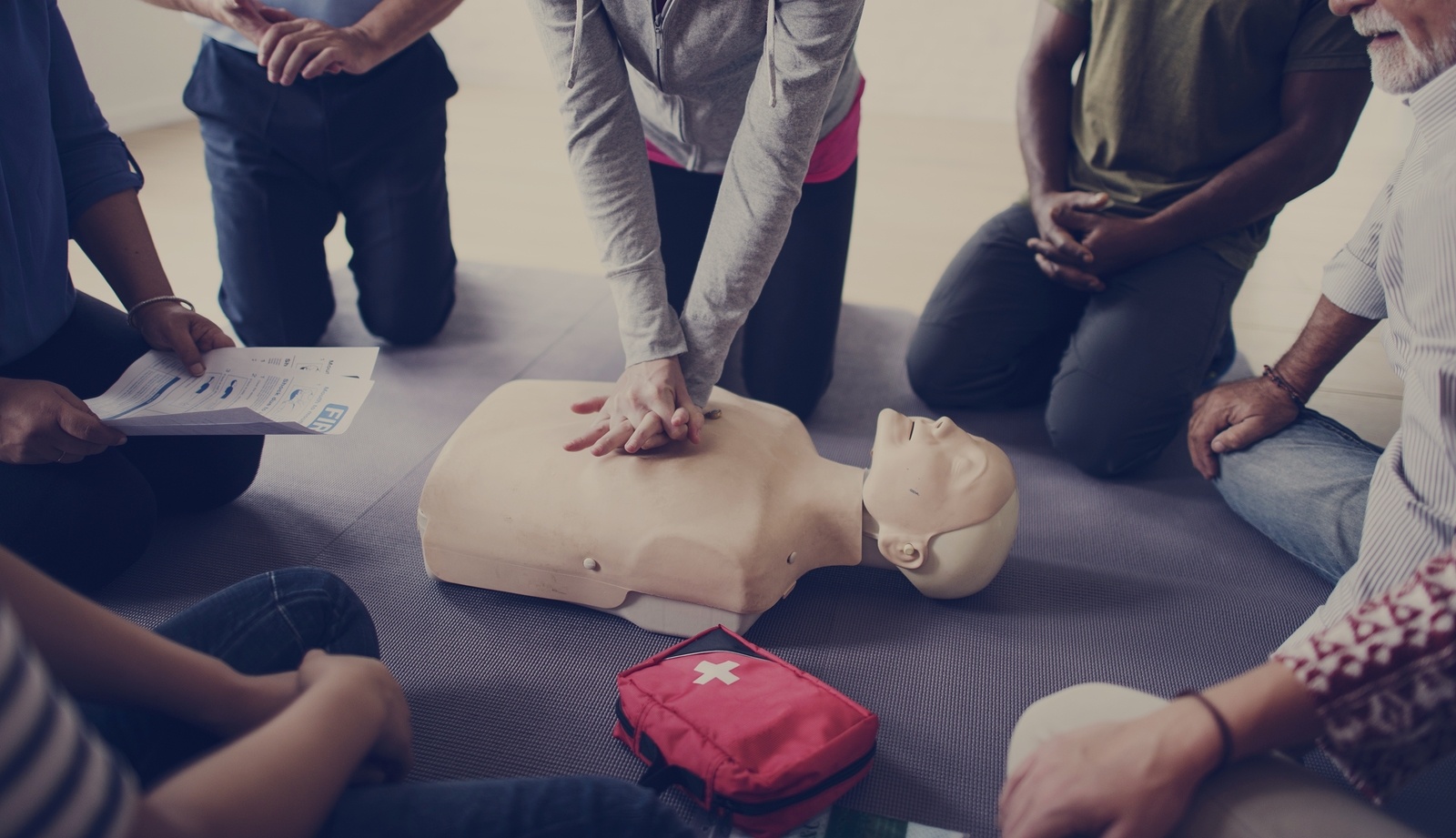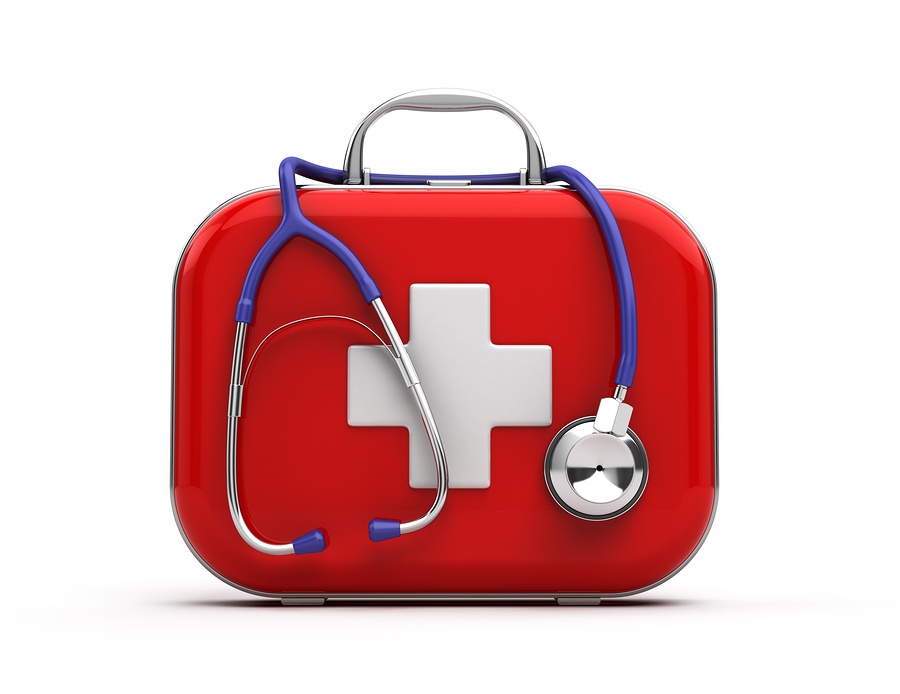With so many websites out there telling you a bunch of different things about how to administer CPR and first aid, we understand that facts can get muddled up with opinions. However, these life-saving skills are two things you should absolutely get straight, so our team here at Surefire CPR is here to help you do just that. Below, we’ve put together a comprehensive CPR and First Aid guide for anyone who is looking for information from a professional source. Most of this guide (especially the CPR facts) comes directly from the American Heart Association, so you know you’re in good hands. Read on for more information, and enroll in our award-winning CPR and first aid classes today!
What is CPR?
CPR (Cardiopulmonary Resuscitation) is the most useful and learnable method for citizen first responders when they encounter a person whose heart has stopped beating and/or they have stopped breathing. Properly administered CPR can save lives by getting a victim’s heart beating and lungs breathing on their own again. This is done by externally pumping the victim’s heart and filling their lungs.
A History of CPR
Before CPR was CPR, it was known as mouth-to-mount resuscitation. Mouth-to-mouth resuscitation was first invented by Dr. James Elm and Dr. Peter Safar in 1956 and quickly caught on in the medical community. (However, as early as 1740, the French Academy of Sciences was recommending a version of mouth-to-mouth resuscitation for victims of drowning.) By 1957, the US military had adopted mouth-to-mouth resuscitation as their approved method of reviving unresponsive victims.
In 1960, CPR as we know it was developed and soon after, the American Heart Association started a program aimed at acquainting physicians with close-chest cardiac resuscitation, and by 1963, the American Heart Association formally endorsed CPR. Today, more than 12 million people are trained annually to perform bystander CPR.
CPR Statistics
In most cases, the individuals in need of CPR are those who have gone into cardiac arrest. According to the American Heart Association: “nearly 383,000 out-of-hospital sudden cardiac arrests occur annually, and 88 percent of cardiac arrests occur at home. Many victims appear healthy with no known heart disease or risk factors.” With so many cardiac arrests occurring in the home, this means that, statistically speaking, the life that you will be saving with CPR will be that of one of your loved ones.
Properly administered bystander CPR provided directly after a sudden cardiac arrest can double or triple a victim’s chances of survival over just calling 911 and waiting for the paramedics to arrive. This is because the first couple of minutes after a cardiac arrest occurs are the most important to a victim’s survival chances.

The Two Steps of Performing Hands-Only CPR
- Call 911 if you see a teen or adult suddenly collapse.
- Push hard and fast in the center of the chest to the beat of a familiar song that has 100-120 beats per minute.
Some Pro Tips:
- Survey the scene. First, make sure you are not putting yourself into danger by attempting CPR. This is rare, but it does happen. For example, if someone is in a puddle of water right near a downed powerline, you do not want to administer aid. Do not continue with the other steps of CPR — other than calling 911 — to get the proper personnel to the scene to take care of the accident. Don’t make two victims from an incident that started with one.
- Calling 911. Ideally, you will prompt someone else on the scene to call 911 so that you can begin administering CPR ASAP. The first few of minutes are the most important in determining whether an individual will survive. If there is no one else on the scene, DO NOT skip this step. Call 911 yourself, get an ambulance on the way and then begin CPR.
- Breaking Ribs. There is a chance that you may hear some cracking when you start your compressions. It is common for this to startle first time rescuers to the point that they stop compressions. This is normal and something that should not stop you. Keep compressing the chest and help save a life!
- Full Certification. There are some situations where chest compressions and breaths may be more effective. This is the case in chokings, drownings, and many other respiratory based cardiac arrests. Child and infant CPR skills, along with conscious and unconscious choking is usually covered in these CPR courses.
AEDs: Life-Saving Machines for Hearts
An AED (automated external defibrillator) is one of the very best life-saving machines for reviving a victim whose heart has stopped. AED’s are so effective that these little, helpful machines are used in hospitals day in and day out for jumpstarting the hearts of victims, typically those suffering from cardiac arrest. In fact, if an AED is used within 3 – 4 minutes after a heart has stopped beating, the chance of patient survival is 60%. The way they work is by giving the heart an electrical shock that attempts to jump the heart back into working again. Think of it like this: your heart is a car battery and an AED jumpstarts your heart into pumping, just like jumper cables give a battery the electrical charge it needs to power your car.
AEDs are very user-friendly, inexpensive (around $1,000), and can be found at nearly every public pool, school, or civic space you can think of. CPR courses teach citizen first responders how to use AEDs while giving CPR, but AEDs are also developed to be able to use without ever having used one before. The easy to comprehend instructions inside the AED will walk you through the process of using an AED in conjunction with CPR.
About Basic First Aid
Basic first aid is a skillset that deals with types of injuries including broken bones, trauma (open wounds), seizures, asthma attacks, allergic reactions, and other emergency issues. Knowing how to administer basic first aid for these emergencies and more can help you put a person on the fastest path to healing. In some cases, it can even save a life.
The First Aid Kit: What You’ll Need
Administering successfully first aid is a combination of skills and supplies. Before covering how you can learn the skills, we’re going to outline an essential list of first aid supplies you need for your first aid kit.
- Fabric adhesive bandages in multiple sizes
- Elastic bandages with clips
- Plastic bandages
- Butterfly bandages
- Dressing gauge in several sizes
- A pair of nitrile gloves
- A trauma pad
- Pre-cut and shaped moleskin
- A cold pack
- Safety pins
- A disposable thermometer
- Splinter picker/tick remover forceps
- A manual that details how to care for children outdoors
- Insect repellent
- Antiseptic wipes
- Cotton tip applicators
- Triple antibiotic ointment

Looking for a First Aid Kit for the Car? We’ve put together a special post on what you’ll need in case you come across an emergency on the road. Need something small, portable and ready for action? Take a look at our essential guide to Car First Aid Kits.
First Aid Training: Why You Should Always Learn From Professionals
When it comes to first aid training, professional instruction is always the way to go. This is because different emergencies require different first aid, and learning from a certified instructor can help you get the proper information, no matter what you’re dealing with. You’ll also get the chance to practice first skills firsthand, so you’ll be ready to tackle everything from burns and broken bones to allergies and seizures.
Learn the Right Way: Get Your CPR and First Aid Certification Here
We’ll conclude by echoing the sentiment from the previous section. The best way to learn CPR and first aid is to take CPR and first aid classes. There, you’ll learn the ins and outs of each life-saving skill from professionals with real-world experience. You’ll also have ample opportunities to practice those skills yourself in a hands-on learning environment. At the end of each course, you’ll receive a certification card valid for 2 years. Here at SureFire CPR, we are proud to offer both CPR certification and Basic First Aid certification courses to individuals and groups in Southern California. Explore the links to learn more about our award-winning single-day courses — and start saving lives with us today!
